Create a successful, low cost succulent garden
Succulent revival
With the revival of interest in growing succulents, there has been a flurry of magazine articles, books and TV programmes about how to go about creating a succulent garden. Innovative ideas are presented and glossy pictures illustrate stunning views of pristine gardens, rich with amazing specimens, sculptures and boulders, with spaces and pathways covered with a variety of coloured stones and gravel. The optional word here being 'rich'. Little or no attention is given to the average gardener who drools over these wonders, knowing full well that such displays cost thousands of rands (or dollars or whatever), and even converting a small corner of the garden is well beyond their ability to finance.
But succulents are so ugly!
Before I go any further I'd like to clear up the misconception that succulents are prickly dry plants of little or no interest, lacking in colour and don't flower. Succulents were usually banished to a dry corner of the garden where they received no water, minimal attention and in a short period of time did indeed, become unattractive from a lack of care. As with any plants, succulents need to be attended to: removing of dead leaves, cutting or pinching back to encourage bushy growth, watering when necessary, dealing with pests and diseases, dead heading and replacement.
Furthermore, for many years succulents were pretty well ignored by suppliers and there was little variety to choose from. Take a look at the following photos. South Africa has a vast variety of fascinating succulents, eagerly accumulated by collectors overseas, but sadly ignored by ourselves. The choices are endless and the photos show only a small fraction of what is available.
Moving on
Let's look at how to go about it in the least costly way possible.
Start small
Even a couple of square meters will do. If possible, choose a spot where at least some of the area gets full sun for most of the day. A little shade is quite acceptable, as many succulents prefer some shade during the hottest part of the day. There are even a few succulents that thrive in full shade. Any soil will do as long as it is well drained. Succulents do not need a lot of nutrients so nutrient poor soils are fine. Some of the best results I have had have been in sandy soil close to the beach. Dig in some compost only if you wish to do so. The plants are sure to appreciate it and the soil will stay moist for a little longer. Heavy clay soil where water accumulates is not suitable for any succulents. A slope is great if you have it, but not a necessity.
Create a focal point
Next, consider a focal point. This could be a group of interesting rocks or boulders, a large aloe, a container or three at different levels, a wooden barrel, a few logs or railway sleepers, a piece of driftwood or even an old wheelbarrow. Keep a lookout at second hand shops, boot sales or your neighbour's and friend's trash. Garages are often storehouses for unwanted articles and people who are moving house will often throw out all sorts of useful items. Poke around - something you can use will catch your eye.
Background
While setting out the garden, take note of the background. An open area or unadorned wire fence will rob you garden of its impact. For a small patch, a quick- growing low hedge of a small to medium-sized shrub may be the answer for a backdrop. Alternatively a trellis, wall, hedge or a variety of shrubs can be used to show up the succulent area, while connecting it to the rest of the garden.
Design considerations
Once you have arranged your basic structure to your liking, you can start to plant. Take note of the following points when choosing your plants:
-
Repetition of similar shapes, colours and textures gives continuity.
-
Contrast of different colours and shapes adds variety and interest.
-
Colour: succulent leaves come in a wide variety of colours from bright green to blue, orange, red and grey.
-
Size: ensure that aloes and shrubby succulents will have enough space to grow.
-
In nature, succulents are happiest in clumps so mirror this in your garden.
Finishing touches
If you have the finance, cover pathways and bare spots with gravel or pebbles to prevent erosion and weeds. I just use chipped bark or straw as a top-dressing to achieve much the same result. The use of a mulch or gravel allows the soil to retain water and provides shade for the roots.
Watering succulents
Finally, water. Succulents are low-water plants but they are not no-water plants. Too much water will cause the red and maroon colours to fade to green, and many plants will over grow and become too fleshy. Succulents will look their best when the soil is allowed to dry out between waterings.Water less during the winter months when succulents have a rest period.
And now for the best news.
Propagating your plants
Succulents are extremely easy to propagate. You often need only a cutting to start off a plant, so buy wisely. The easiest and least expensive way to accumulate a variety of species is to beg pieces of succulents from friends and neighbours. Take a walk around your area and keep your eyes open for succulents. If you see something you like, approach the owner - most people are very obliging and will gladly give you a sample. If buying from a nursery, a single clump or pot of most succulents will give you enough to start with, and you will soon have spares to swap with other gardeners to increase you own varieties. To propagate most succulents, take a cutting, clean off any dead leaves, leave a short stem and allow the cut to dry out in a shady spot for a couple of days. Plant the cuttings straight into the ground where you want them to grow or into a container of sandy soil.Water only when the soil is almost dry as too much water will rot the stems. The cuttings will root in a couple of weeks to a month.
As you develop your succulent garden, you will probably want to incorporate some succulents that cannot be so easily propagated and these you may have to buy. Aloes, Haworthias, Faucarias, Stapelias and many members of the Vygie family will add interest and become mini-focal points. But these can come later. Establish your garden with inexpensive, easy growing plants first, so that by the time you begin to add more costly plants, your confidence and experience will ensure that they are properly cared for and will thrive.
Are you hooked?
I hope I have inspired you to give succulents a try. As our weather heats up and water becomes more scarce, succulents will allow you to have a colourful and interesting garden despite heat waves and water restrictions.
Browse through the succulents on the website for a look at some of the lovely succulents found in South Africa. Go to: http://kumbulanursery.co.za/plant-search?keys=&botanical=&common=&field_...


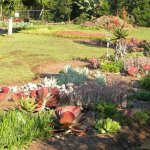
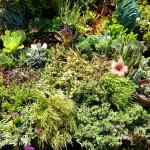
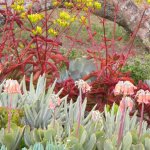
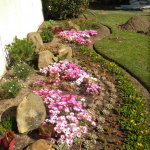
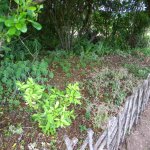
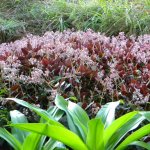
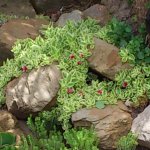

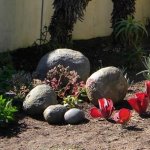
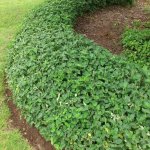
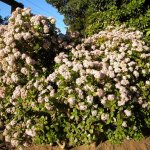
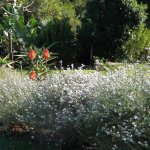

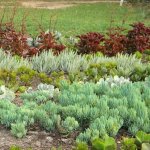
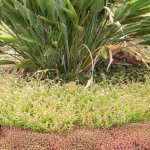
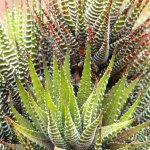
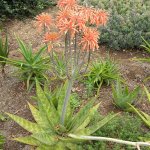
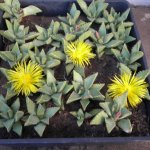


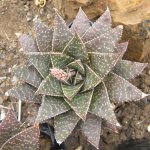


Comments
Would love to start my own
Would love to start my own succulent garden
Really very good news!!! this
Really very good news!!! This information is really worth looking at for everyone. Great tips. I am going to be sharing this with all my friends! Thanks for sharing useful information.
http://rexgarden.com/
Planting succulents
Hi James
Than you for your positive comments.
Kind regards
Lorraine
Add new comment